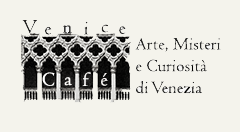- Decameron
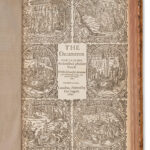 In 1620 the English translation of Boccaccio’s Decameron was published anonymously in London by John Florio. The handsome folio was printed in two volumes, adorned with woodcut illustrations of French origin. The printer was Isaac Jaggard, and the dedicatee Sir Philip Herbert, Earl of Montgomery, to whom is also addressed an ‘epistle dedicatory’, supposedly by… Read more: Decameron
In 1620 the English translation of Boccaccio’s Decameron was published anonymously in London by John Florio. The handsome folio was printed in two volumes, adorned with woodcut illustrations of French origin. The printer was Isaac Jaggard, and the dedicatee Sir Philip Herbert, Earl of Montgomery, to whom is also addressed an ‘epistle dedicatory’, supposedly by… Read more: Decameron - Queen Anna’s New World of Words
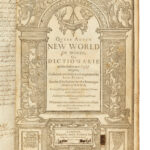 Florio’s magnum opus as lexicographer was his augmented dictionary Queen Anna’s New World of Words, or Dictionarie of the Italian and English tongues (London 1611), embracing nearly 74,000 definitions. Not only was the volume almost twice larger than its predecessor, containing about 75.000 definitions, but in the preparing of it he had consulted 249 books… Read more: Queen Anna’s New World of Words
Florio’s magnum opus as lexicographer was his augmented dictionary Queen Anna’s New World of Words, or Dictionarie of the Italian and English tongues (London 1611), embracing nearly 74,000 definitions. Not only was the volume almost twice larger than its predecessor, containing about 75.000 definitions, but in the preparing of it he had consulted 249 books… Read more: Queen Anna’s New World of Words - Montaigne’s Essays
 Montaigne’s Essays by John Florio is highly regarded as a work of art as well as one of the most popular and influential Elizabethan translations. The Publication June 4th, 1600 is the day that saw the publication of one of the most popular and influential Elizabethan translations. John Florio’s rendering of Michel de Montaigne’s Essays… Read more: Montaigne’s Essays
Montaigne’s Essays by John Florio is highly regarded as a work of art as well as one of the most popular and influential Elizabethan translations. The Publication June 4th, 1600 is the day that saw the publication of one of the most popular and influential Elizabethan translations. John Florio’s rendering of Michel de Montaigne’s Essays… Read more: Montaigne’s Essays - A World of Words
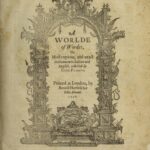 While he was engaged in the service of Henry Wriothesley, Florio produced a work which remains a landmark in the history of Italian scholarship in England. A Worlde of Wordes, or Dictionarie of the Italian and English tongues (London, 1598) is an Italian-English Dictionary, and, as such, only the second of its kind in England and much… Read more: A World of Words
While he was engaged in the service of Henry Wriothesley, Florio produced a work which remains a landmark in the history of Italian scholarship in England. A Worlde of Wordes, or Dictionarie of the Italian and English tongues (London, 1598) is an Italian-English Dictionary, and, as such, only the second of its kind in England and much… Read more: A World of Words - Second Fruits
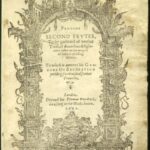 Second Fruits is John Florio’s second work. Entitled Second Frutes to be gathered of twelve trees, of diverse but delightful tastes to the tongues of Italian and English (1591), it appeared thirteen years after the publication of the First Fruits, and is a product of perhaps the most interesting period of his life. Second Fruits: a new literary… Read more: Second Fruits
Second Fruits is John Florio’s second work. Entitled Second Frutes to be gathered of twelve trees, of diverse but delightful tastes to the tongues of Italian and English (1591), it appeared thirteen years after the publication of the First Fruits, and is a product of perhaps the most interesting period of his life. Second Fruits: a new literary… Read more: Second Fruits - First Fruits
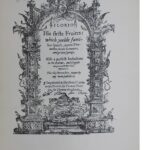 First Fruits is John Florio’s first work, published in London in 1578 at 25 years old. Entitled “Florio his firste fruites which yeelde familiar speech, merie prouerbes, wittie sentences, and golden sayings. Also a perfect induction to the Italian, and English tongues, as in the table appeareth. The like heretofore, neuer by any man published.” this work… Read more: First Fruits
First Fruits is John Florio’s first work, published in London in 1578 at 25 years old. Entitled “Florio his firste fruites which yeelde familiar speech, merie prouerbes, wittie sentences, and golden sayings. Also a perfect induction to the Italian, and English tongues, as in the table appeareth. The like heretofore, neuer by any man published.” this work… Read more: First Fruits


